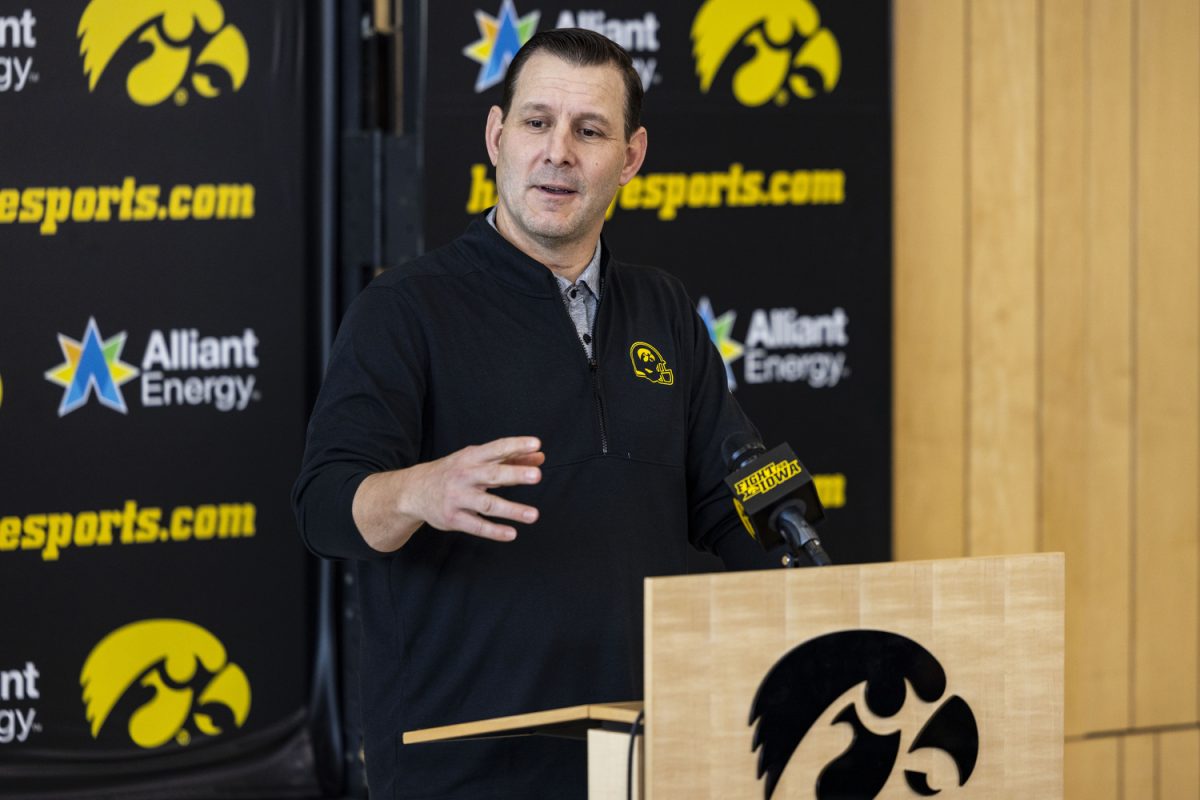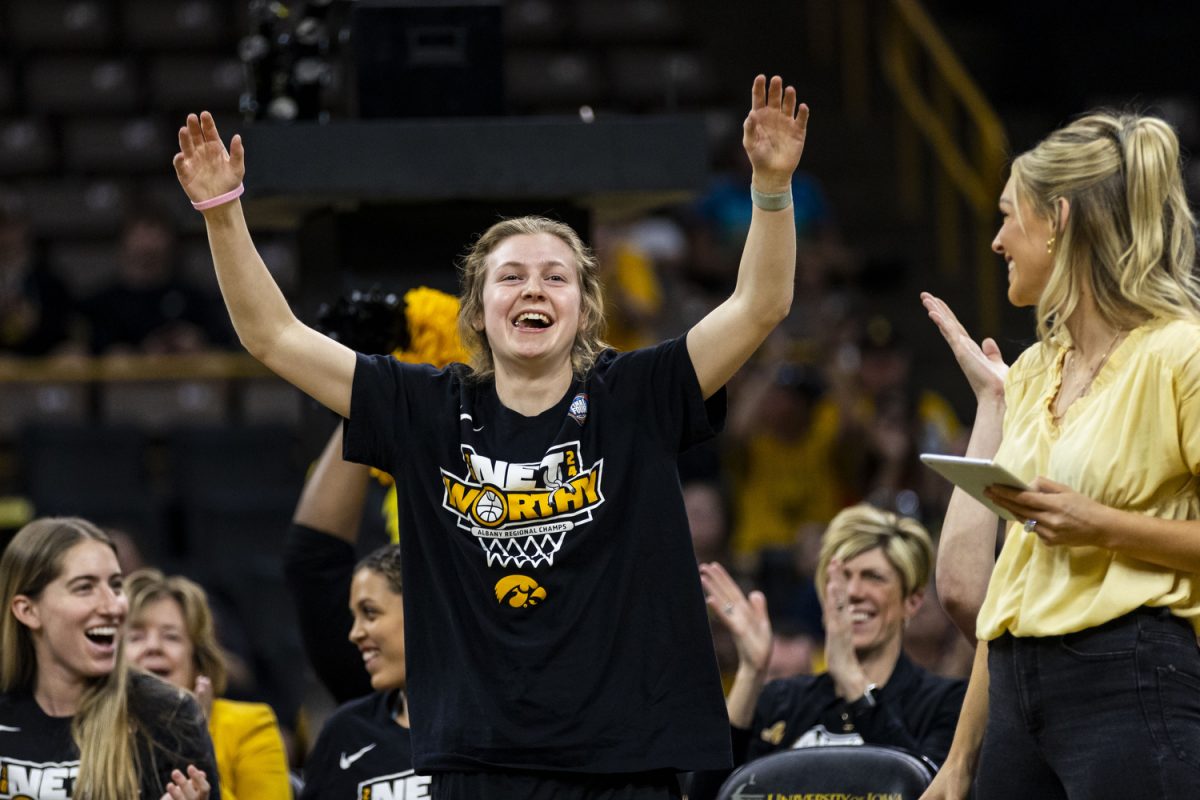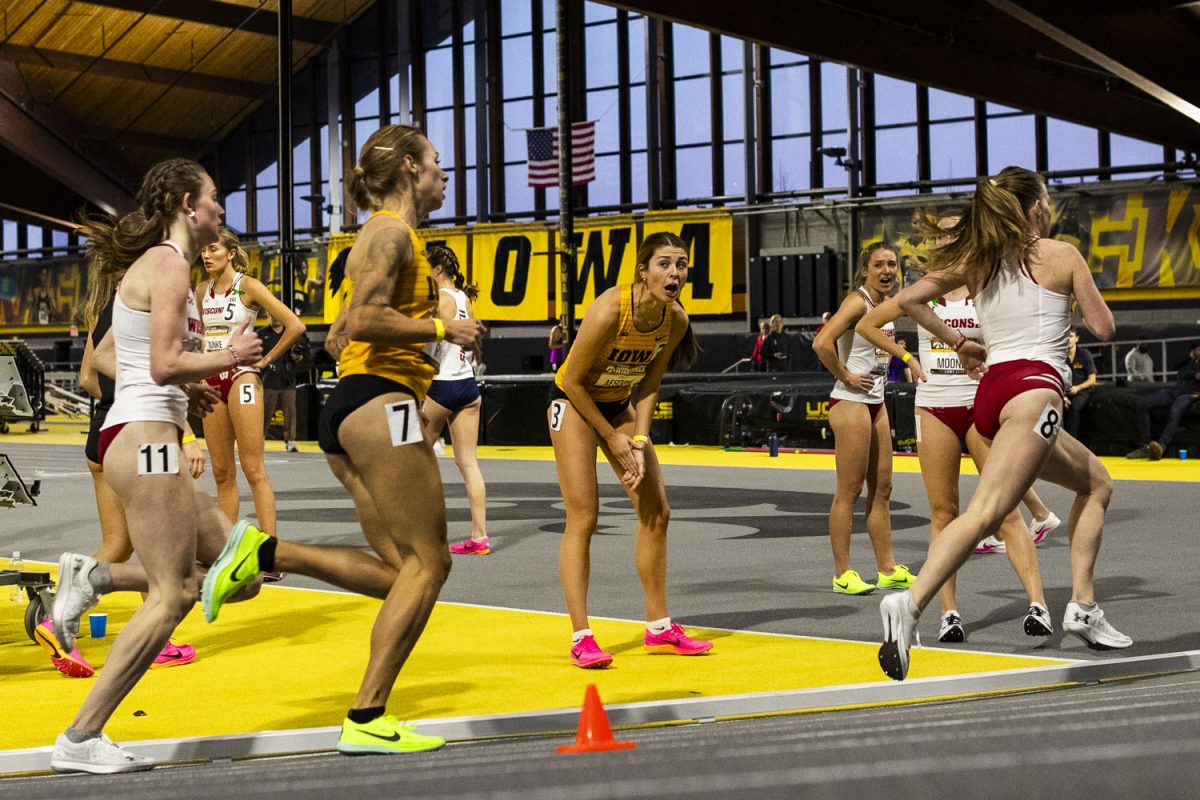When looking at the Iowa men’s swimming 200 medley relay and 400 free relay, the lineups from this season are inconsistent. Swimmers rotate in and out depending on who is performing better that week in practice or by a coach’s gut feeling.
But what does remain consistent is the results.
The male relay squads have gotten it done this season no matter whom they compete against. Against every opponent, the Hawkeyes have finished no worse than second place in every relay race.
It doesn’t matter that Iowa has used anyone from freshman Dustin Rhoads to senior Sean Hagan — the Hawkeye swimmers have performed exceptionally well from the time they get their feet set on the blocks to when they touch the wall.
"[Being chosen to swim in a relay] is more based on how we’re performing," junior Duncan Partridge said. "I don’t think anyone really asks to be on a relay — you just have to prove yourself."
Typically, during dual-meet competition, there will be only two relays — the 200 medley and the 400 free. In the medley relay, each participant swims a different stroke, starting with back, then breast, fly, and finally free.
The Iowa coaches tend to choose their fastest swimmers for each stroke during the medley relay, junior Paul Gordon said.
"[The difference between a medley relay and free relay] is we have guys like Sean Hagan, who could do breaststroke or backstroke," Gordon said. "We’ve got guys who are versatile, whereas in a free relay, the order only depends on how you think your opponent will be swimming."
Because they are team events instead of individual races, relays are the most popular among the Hawkeye swimmers. Relays are also the events that generate the highest score depending on how the squad places, and that score often determines the outcome of the meet.
During practice, swimmers work on technique by using a reaction pad — which calculates if the team member jumps off before a returning swimmer touches the wall — when they line up on the blocks.
Timing is essential, even if it is by a few tenths of a second. Too early a start, which can lead to disqualification of the entire event, or too late of a start can determine the outcome of the meet.
The relay teams performed their best Sunday at the Hawkeye Invitational: Iowa placed first in all events.
"It’s a goal of ours to be scoring on a relay at NCAAs," head coach Marc Long said. "We’ve still got a lot of time [this season] to get people to get on the ‘A’ relays."
Realizing the importance of these events, teammates stand on the sidelines belting out the familiar chant "Hawkeye Relays" at the top of their lungs.
Swimmers attribute the team chemistry and support during these races among the reasons for success.
"I always swim a little quicker during relays, because I like going with people on a team instead of against them," junior captain Ryan Phelan said. "Everyone is rooting for you, and with everyone in sync, it raises the energy and gives you a boost."
The cheers can pump up the participating members and intimidate other teams.
"Everyone is always striving to be on a relay, but no swimmers are ever mad or angry if they aren’t, they’re always supportive," Partridge said. "I think the [chants during the relays] shows the energy we bring to the pool.
"Those cheers represent and show [the competition] that we like to swim, we like to compete, and we like to beat people."






